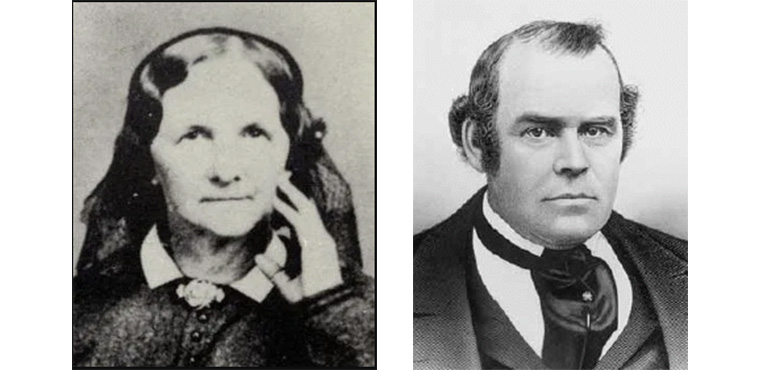By Dr. Curtis Varnell
Observing a tour bus parked at a small rural cemetery enlivens the curiosity; especially of historians who regularly trace genealogy by visiting such locations. Following up on my inquisitive nature lead to unraveling one of the most intriguing and unusual stories of early Arkansas.
The cemetery contained a large monument and stone dedicated to Parley P Pratt, one of the original twelve apostles of the Latter Day Saints (Mormons). Being a member of the Quorum meant that Pratt was one of the original founders and followers of Joseph Smith and an equivalent to eventual church leader Brigham Young. So, why was he buried in Alma?
Pratt, born in New York, was an early convert of the LDS church and was involved in several missionary journeys. During that period of time, he became noted as an author and published several books, poems, and pamphlets. He undertook one of the original journeys to establish the faith in Utah and served on the Legislative Council of the Utah Territory.
In 1855, he served as a missionary to San Francisco. While there, he encountered and befriended a young convert by the name of Eleanor McLean. Eleanor was married and had two children. Her husband Hector, described by some as violent and other as just jealous, was opposed to Eleanor joining the Mormon faith. Eventually, Eleanor fled the home and journeyed to the Utah territory to join others of like faith. Her two children were placed in the home of her parents who lived in New Orleans.
By late 1855, Eleanor, although still legally married to Hector, had married Parley Pratt. Pratt practiced polygamy and had eleven other wives and a total of thirty children, a fact that probably inflamed her husband and his friends even more.
In 1857, while Pratt was away on a missionary journey to the East Coast, Eleanor travelled to New Orleans in an attempt to recover her children. The plan was to get the children, meet Parley as he returned from his missionary trip, and return by wagon to Utah.
Hector, discovering her plans, filed criminal charges against Pratt and Eleanor, and chased the two across the Southwest. Pratt was arrested near Fort Gibson by the military while crossing Indian Territory and he was brought to Van Buren for trial. Hector, hot on Pratts trail, was in Van Buren for the trial.
Judge John Ogden listened to the testimony of both Pratt and Eleanor and determined there was lack of evidence for conviction. Pratt was released from jail where he had been placed, perhaps for his own safety since Hector’s plight had enflamed the passion of several locals. Hector was waiting for Pratt’s release. He and several cronies waited until Pratt was out of Van Buren and then gave chase. Hector emptied his gun at Pratt but failed to bring him down. Eventually McLean cornered Pratt in a small groove of trees near Alma. Hector then stabbed Pratt twice in the chest with a bowie knife and shot him with a derringer. Members of the Wynn family witnessed the shooting and attempted to help Pratt but he died two and a half hours later. Even though his wishes were to be buried in Utah, the situation required his internment in the small cemetery near Alma.
The great –grandfather of Massachusetts governor and Presidential candidate Mitt Romney still remains on the lonely hillside near Alma, Arkansas. The memorial stone with the beautiful poem written by Mr. Pratt describes the daily hopes of each of us:
The Morning Breaks, the Shadow Flee, The Dawning of a Brighter Day, Majestic Rises on the World.






